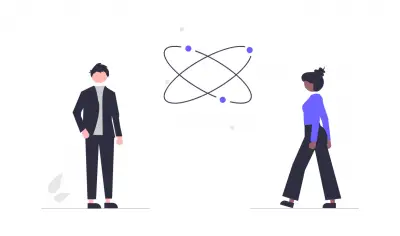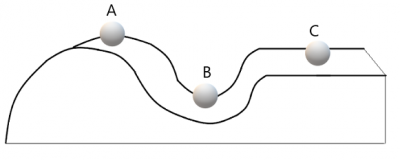
Physics Questions and Answers
If you want to learn more about the nature and properties of matter and energy or you're simply preparing for a Physics exam, these Physics past questions and answers are ideal for you.

If you want to learn more about the nature and properties of matter and energy or you're simply preparing for a Physics exam, these Physics past questions and answers are ideal for you.
How much net work is required to accelerate a 1200 kg car from 10\(ms^{-1}\) to 15\(ms^{-1}\)
1.95×\(10^5 j\)
1.35×\(10^4 j\)
7.5×\(10^4 j\)
6.0×\(10^4 j\)
Correct answer is C
m=1200kg, \(V_1\)= \(10ms^{-1}\) \(V_2\) = \(15ms^{-1}\), w= ?
work=►K.E = \( K.E_2\) = \(K.E_2\) - \(K.E_1\)
⇒work= \(\frac{1}{2}{mv^2_2}-\frac{1}{2}{mv^2_1}\)
⇒work= \(\frac{1}{2}m({v^2_2}-{v^2_1}\))
⇒work= \(\frac{1}{2}× 1200× (15^2-10^2)\)
⇒work = 600 × (225 -100)
⇒work= 600 × 125
⇒work= 7.5×\(10^4 j\)
Which process is responsible for production of energy in stars?
Nuclear reaction
Nuclear fission
Nuclear fusion
Radioactive decay
Correct answer is C
Nuclear fusion is the process in which lighter nuclei are combined to form heavier ones. Matter lost in this process is converted into energy. The energy produced inside the stars is due to the process of nuclear fusion.
2.5kw
250kw
300kw
3.0kw
Correct answer is A
L=1.5m, A=\(620m^2\), ø=25-15=10°c
K=0.6071 , \(Wm^{-1}k^{-1}\) , \(\frac{q}{t}\) =?
\(\frac{q}{t}\) =KA, \(\frac{►t}{L}\)
where k is the thermal conductivity constant and \(\frac{q}{t}\) is the rate of heat transfer
=\(\frac{q}{t}\)=0.6071×620×\(\frac{10}{1.5}\)
\(\frac{q}{t}\) = 2509.35w ≈ 2.5kw
(ii) and (iv) only
(i), (iii) and (iv) only
(ii), (iii) and (iv) only
(i), (ii) and (iv) only
Correct answer is C
As light ray enters a drop of water the light is refracted at the surface and at the end of the drop, it is totally internally reflected in which the reflected light returns to the front surface, where it again undergoes refraction as it moves from water to air. The result of this is a dispersed light of colours of different wavelengths.

Name the type of equilibrium for each position of the ball
A - unstable, B - neutral, C - stable
A - stable, B - neutral, C - unstable
A - stable, B - unstable, C - neutral
A - unstable, B - stable, C - neutral
Correct answer is D
Object A will undergo unstable equilibrium as it can move farther from its original position
Object B will undergo stable equilibrium as it can return to its original position
Object C will undergo neutral equilibrium as it can remain in a new position